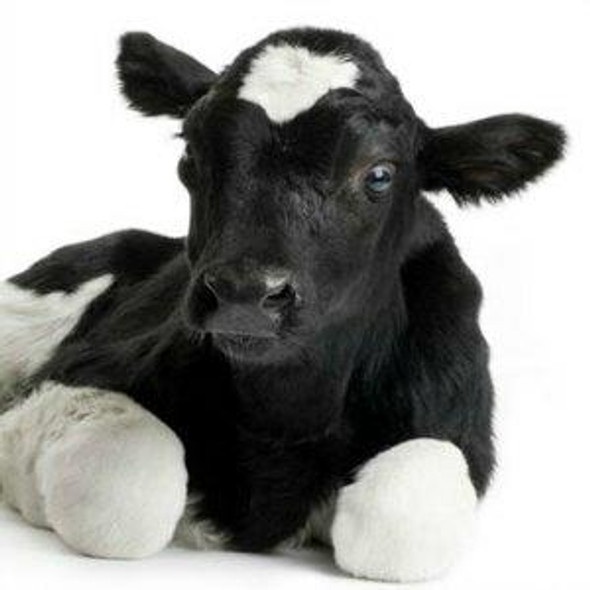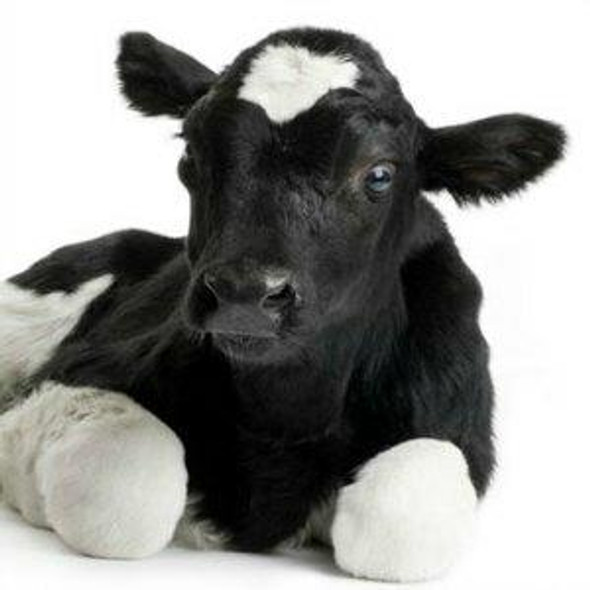Bovine Signalling ELISA Kits
Bovine IL-1bELISA Kit (BOFI00060)
- SKU:
- BOFI00060
- Product Type:
- ELISA Kit
- Size:
- 96 Assays
- Uniprot:
- P09428
- Sensitivity:
- 9.375pg/ml
- Range:
- 15.625-1000pg/ml
- ELISA Type:
- Sandwich
- Synonyms:
- IL1 beta, Catabolin, IL 1, IL 1 beta, IL1 BETA, IL1B, IL1beta, IL1F2, IL-1Beta, Interleukin 1 beta, interleukin 1, beta, Pro IL-1Beta
- Reactivity:
- Bovine
- Signaling Molecule:
- Cytokine
Description
Bovine IL-1bELISA Kit (BOFI00060)
Key Features
| Save Time | Pre-coated 96 well plate | |
| Quick Start | Kit includes all necessary reagents | |
| Publication Ready | Reproducible and reliable results |
Overview
| Product Name: | Bovine IL-1b (Interleukin 1 Beta) ELISA Kit |
| Product Code: | BOFI00060 |
| Size: | 96 Assays |
| Target: | Bovine IL-1b |
| Alias: | IL1 beta, Catabolin, IL 1, IL 1 beta, IL1 BETA, IL1B, IL1beta, IL1F2, IL-1beta, Interleukin 1 beta, interleukin 1, beta, Pro IL-1beta |
| Reactivity: | Bovine |
| Detection Method: | Sandwich ELISA, Double Antibody |
| Sensitivity: | 9.375pg/ml |
| Range: | 15.625-1000pg/ml |
| Storage: | 4°C for 6 months |
| Note: | For Research Use Only |
Additional Information
| Recovery | Matrices listed below were spiked with certain level of Bovine IL-1b and the recovery rates were calculated by comparing the measured value to the expected amount of Bovine IL-1b in samples. Please contact us for more information. |
| Linearity: | The linearity of the kit was assayed by testing samples spiked with appropriate concentration of Bovine IL-1b and their serial dilutions. The results were demonstrated by the percentage of calculated concentration to the expected. Please get in contact for more information. |
| Intra-Assay: | CV <8% |
| Inter-Assay: | CV <10% |
Protocol
*Note: Protocols are specific to each batch/lot. For the exact instructions please follow the protocol included in your kit.
Before adding to wells, equilibrate the SABC working solution and TMB substrate for at least 30 min at 37°C. When diluting samples and reagents, they must be mixed completely and evenly. It is recommended to plot a standard curve for each test.
| Step | Procedure |
| 1. | Set standard, test sample and control (zero) wells on the pre-coated plate respectively, and then, record their positions. It is recommended to measure each standard and sample in duplicate. Wash plate 2 times before adding standard, sample and control (zero) wells! |
| 2. | Aliquot 0.1ml standard solutions into the standard wells. |
| 3. | Add 0.1 ml of Sample / Standard dilution buffer into the control (zero) well. |
| 4. | Add 0.1 ml of properly diluted sample ( Human serum, plasma, tissue homogenates and other biological fluids.) into test sample wells. |
| 5. | Seal the plate with a cover and incubate at 37 °C for 90 min. |
| 6. | Remove the cover and discard the plate content, clap the plate on the absorbent filter papers or other absorbent material. Do NOT let the wells completely dry at any time. Wash plate X2. |
| 7. | Add 0.1 ml of Biotin- detection antibody working solution into the above wells (standard, test sample & zero wells). Add the solution at the bottom of each well without touching the side wall. |
| 8. | Seal the plate with a cover and incubate at 37°C for 60 min. |
| 9. | Remove the cover, and wash plate 3 times with Wash buffer. Let wash buffer rest in wells for 1 min between each wash. |
| 10. | Add 0.1 ml of SABC working solution into each well, cover the plate and incubate at 37°C for 30 min. |
| 11. | Remove the cover and wash plate 5 times with Wash buffer, and each time let the wash buffer stay in the wells for 1-2 min. |
| 12. | Add 90 µl of TMB substrate into each well, cover the plate and incubate at 37°C in dark within 10-20 min. (Note: This incubation time is for reference use only, the optimal time should be determined by end user.) And the shades of blue can be seen in the first 3-4 wells (with most concentrated standard solutions), the other wells show no obvious color. |
| 13. | Add 50 µl of Stop solution into each well and mix thoroughly. The color changes into yellow immediately. |
| 14. | Read the O.D. absorbance at 450 nm in a microplate reader immediately after adding the stop solution. |
Sample Preparation
When carrying out an ELISA assay it is important to prepare your samples in order to achieve the best possible results. Below we have a list of procedures for the preparation of samples for different sample types.
| Sample Type | Protocol |
| Serum | If using serum separator tubes, allow samples to clot for 30 minutes at room temperature. Centrifuge for 10 minutes at 1,000x g. Collect the serum fraction and assay promptly or aliquot and store the samples at -80°C. Avoid multiple freeze-thaw cycles. If serum separator tubes are not being used, allow samples to clot overnight at 2-8°C. Centrifuge for 10 minutes at 1,000x g. Remove serum and assay promptly or aliquot and store the samples at -80°C. Avoid multiple freeze-thaw cycles. |
| Plasma | Collect plasma using EDTA or heparin as an anticoagulant. Centrifuge samples at 4°C for 15 mins at 1000 × g within 30 mins of collection. Collect the plasma fraction and assay promptly or aliquot and store the samples at -80°C. Avoid multiple freeze-thaw cycles. Note: Over haemolysed samples are not suitable for use with this kit. |
| Urine & Cerebrospinal Fluid | Collect the urine (mid-stream) in a sterile container, centrifuge for 20 mins at 2000-3000 rpm. Remove supernatant and assay immediately. If any precipitation is detected, repeat the centrifugation step. A similar protocol can be used for cerebrospinal fluid. |
| Cell culture supernatant | Collect the cell culture media by pipette, followed by centrifugation at 4°C for 20 mins at 1500 rpm. Collect the clear supernatant and assay immediately. |
| Cell lysates |






